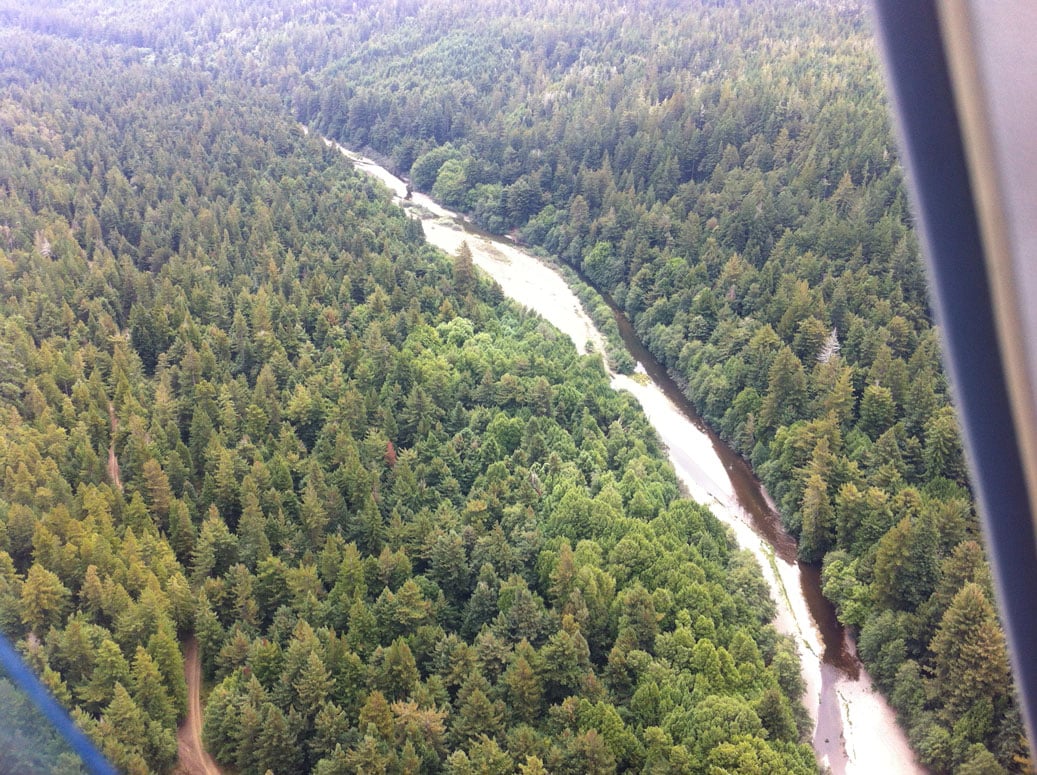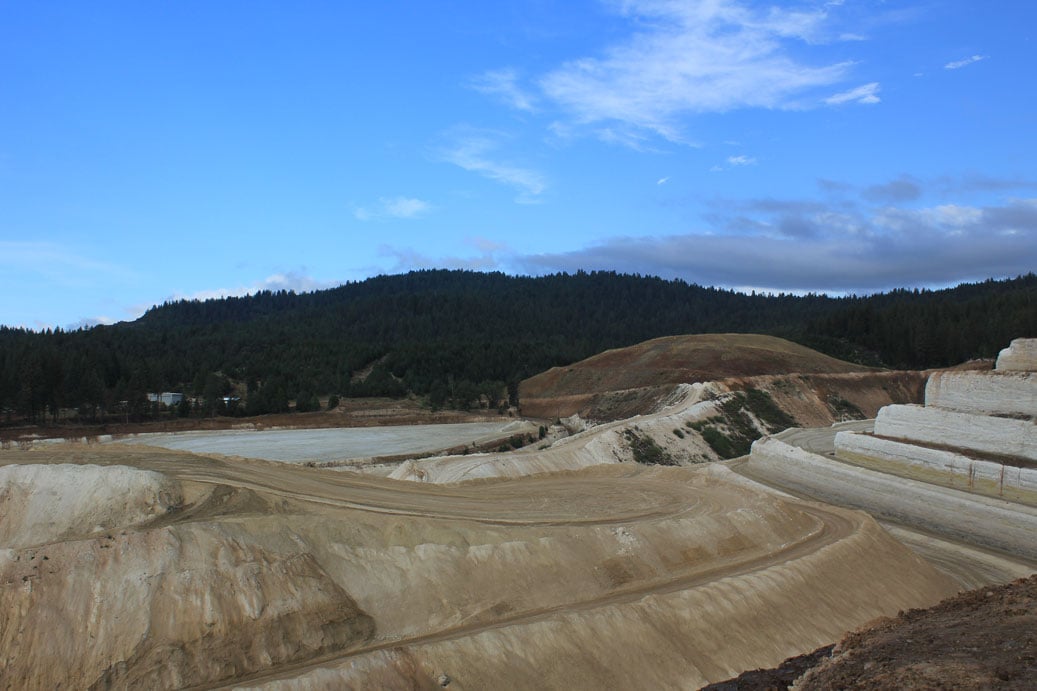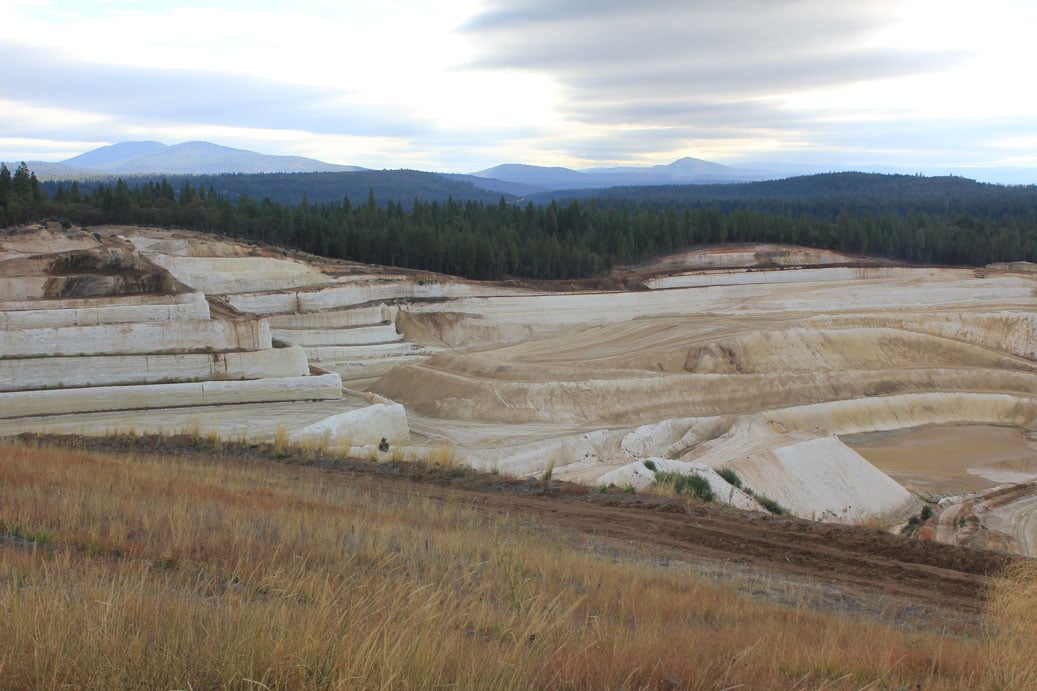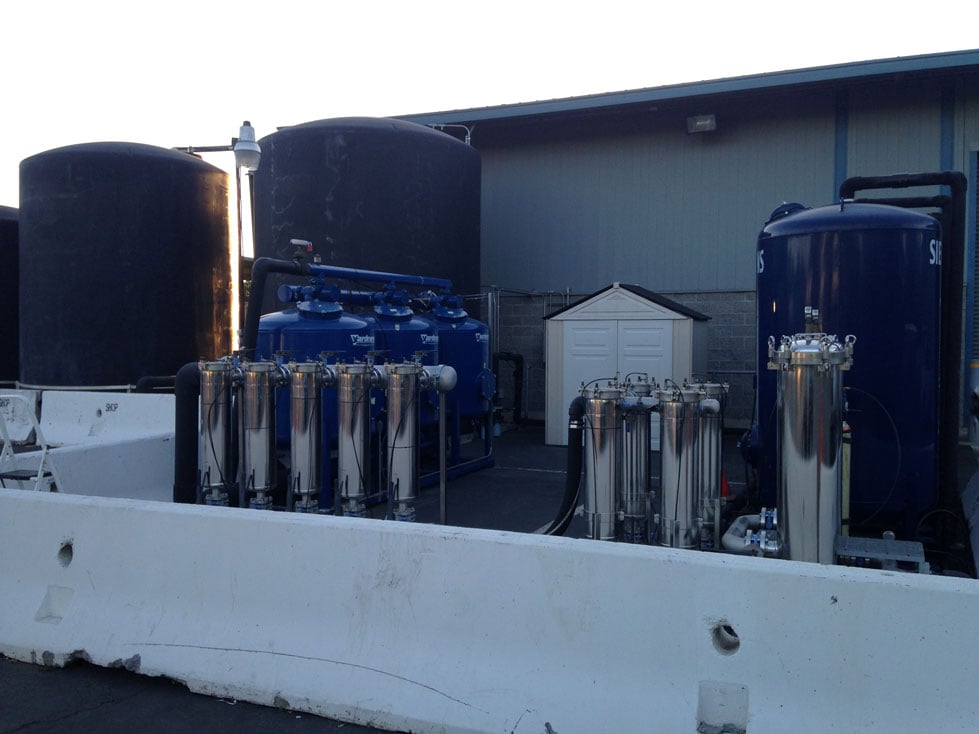The project consisted of placing rock protection along the north side of the instream portion of the siphon pipe. In winter 2015/2016, an eddy or winter flow intensity resulted in the excavation of a large depression alongside of the upstream portion of the siphon. The depression is approximately 7 feet deep and 60 feet long and approximately 10 feet wide at its broadest location.
This project addressed filling the depression with 3-foot-minus, clean, washed quarry rock to reinforce the siphon bed material. In addition, ACID placed additional large washed quarry rock along the remaining exposed portions of the siphon on the upstream side. Currently, salmonids navigate freely over the pipe even at low flow.
The north slope of the siphon was used as the access for repair efforts. The plan included development of a “rock bridge” out to the depression, so that the excavator was not in the streamflow. The rock bridge was constructed with washed spawning recruitment, which was then left in place for natural distribution in the creek bed. No suitable spawning substrate was available in the immediate vicinity of the siphon. Riparian cover is present overhanging portions of the creek bank on the north side of the creek that could provide juvenile salmonid holding.
Specific actions that were completed include:
Obtain permits
Open the current access
Regrade and rock lower portion of access road
Construct and rock the staging area
Construct rock bridge to allow excavator access to depression
Fill depression with large washed quarry rock
Armor remaining north slope of siphon with same-size washed quarry rock; place rock against pipe, below level of current bedload
Remove equipment and leave spawning gravel deposit
Stabilize/complete erosion control activities
Monitor first storms to ensure adequacy of measures
"The Board of Directors and management of Anderson-Cottonwood Irrigation District would like to express our appreciation for the diligent work provided in support of the Clear Creek siphon rehabilitation project over the past several years. This very difficult project has been completed successfully and your efforts, and those of your staff, were an integral part of this success.
The Board has also kept apprised of other projects for which we have sought your support, including restoration monitoring at Cottonwood Creek and Crowley Gulch, obtaining a general permit under NPDES, development of a Routine Maintenance Agreement with CDFW, and environmental and permitting support for other projects over the years.
We thank you for your work on all these project and are especially happy to have completed the Clear Creek project with no impacts to the aquatic and riparian habitats within the work site. We look forward to a continuing and successful relationship in the furture."
- Brenda Haynes, President and Stan Wangberg, General Manager
"This letter is to thank you for the support you provided to our recent Clear Creek siphon armor project. I'm still in awe that after first meeting with the Corps at the project site in mid-May, we obtained all the necessary permits and completed the project by October 3.
This would not have been possible without your help, and I'm very pleased that we were able to get this project off the books and on the ground!
Wendy, you're one of my all-time favorite people to work with and I'm going to miss that very much. You have my sincere best wishes for you and VESTRA in the future, and want you to know that your support of all our projects has been exemplary with top-notch results."
- Stan Wangberg, General Manager










